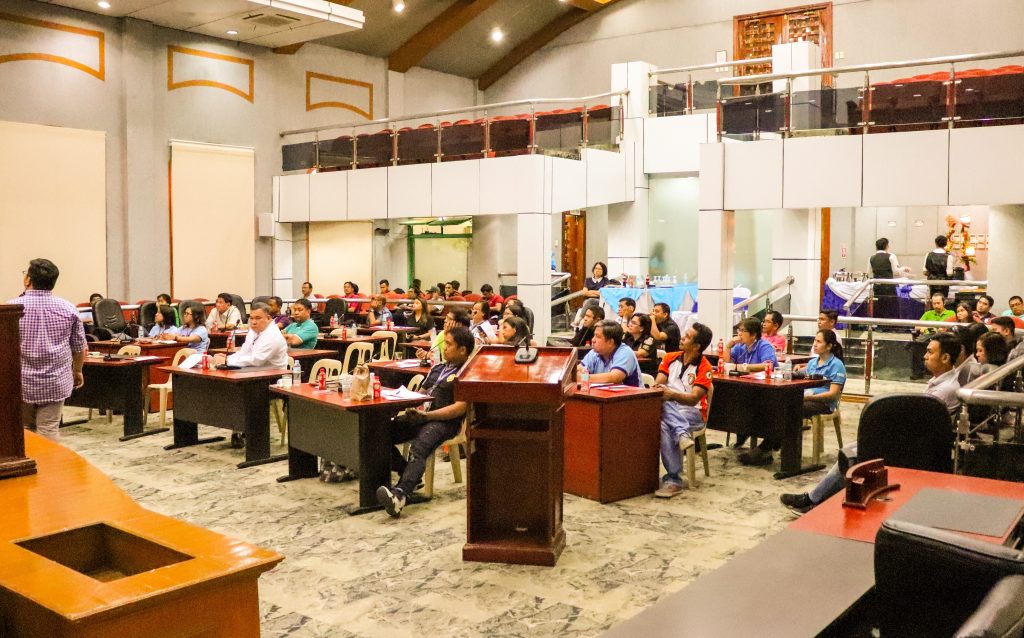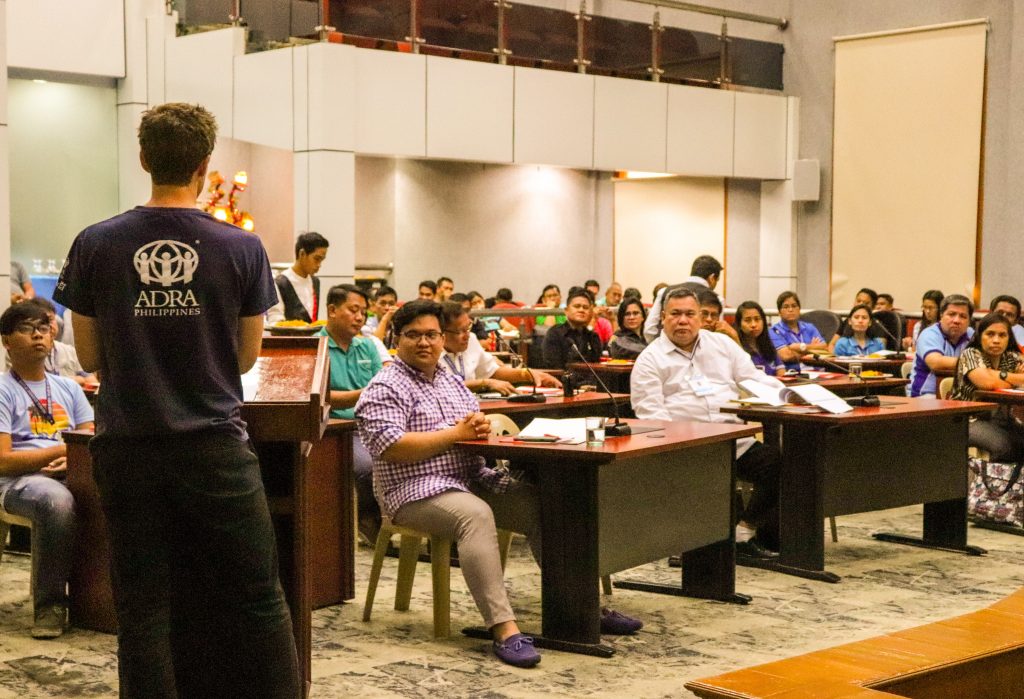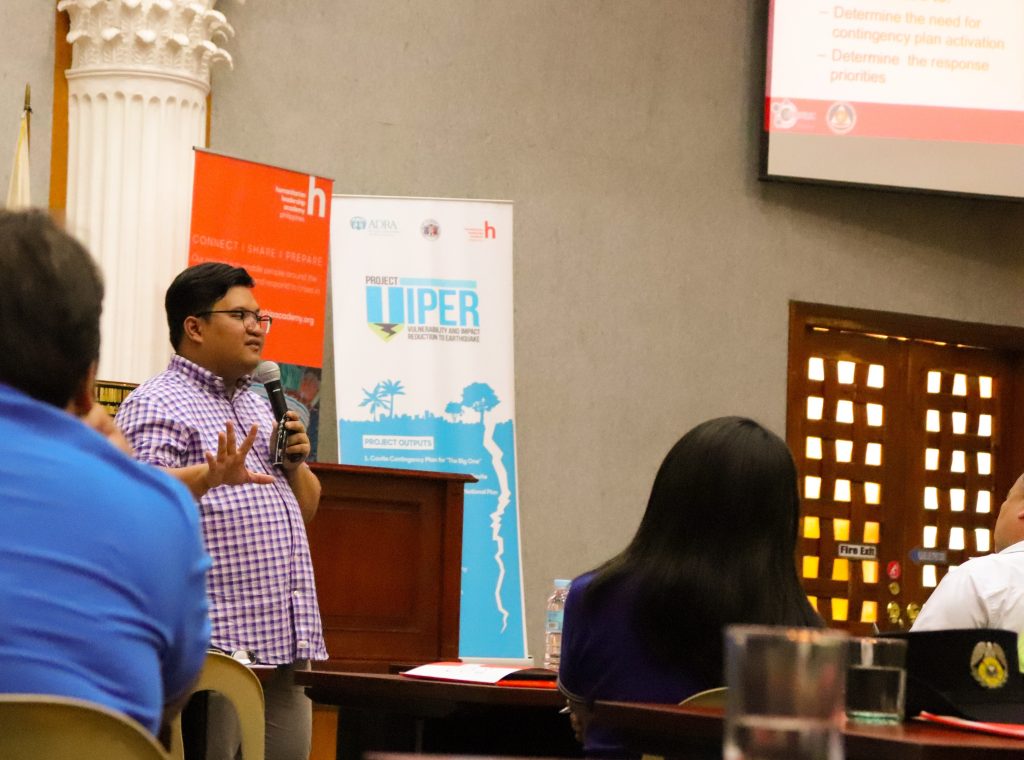The Adventist Development and Relief Agency (ADRA) together with Humanitarian Leadership Academy (HLA) Philippines through Project VIPER (Vulnerability and Impact Reduction for Earthquake), are proud sponsors of the “Orientation on the Cavite Provincial Contingency Plan Formulation for the 7.2 Magnitude Earthquake”.

This event was organized last April 25, 2018, from 9:00AM to 3:00PM, by the Secretariat of the Provincial Disaster Risk Reduction Management (DRRM) Council Provincial Government – Cavite Office of Public Safety (PG-COPS) in coordination with and guided by the Office of Civil Defense (OCD) – Region IV Calabarzon at the Sangguniang Panlalawigan Session Hall in Trece Martirez City, Cavite. The 74 attendees comprised the representatives from the over 50 different local government departments from the 23 municipalities and cities in the province.
Public Relations Officer for PG-COPS Trixia Flores served as the emcee of the event. She led the group during the preliminaries, introduced the speakers, and facilitated the smooth flowing of the program.
Despite not being present, Cavite Governor and Chair of the Provincial DRRM Council Jesus Crispin Remulla and was able to relay his welcome message for all the participants and support for the event through Rolando Alvaran, the OIC for Road Safety Division in Cavite. Cavite Vice Governor and Vice-Chair of the Provincial DRRM Council Jolo Revilla also sent his message through Rey Arevalo, reminding the participants that the formulation of the Contingency Plan is tantamount to saving people’s lives, which is the nation’s most important resource.

Tom Pignon, ADRA Philippines Country Director, gave his thanks to the organizers as well as shared about the success of Project VIPER in the drafting of a Humanitarian Coordination Model and the inclusion of Cavite in the National Harmonized Plan, while reiterating the urgency and importance of the Orientation in the drafting of the Contingency Plan. “The reality of this plan is it will save lives. It will allow us to coordinate better before a disaster hits, before the earthquake happens and will certainly enable us to respond more effectively. And if we can respond more effectively here in Cavite to an earthquake, and any sort of disaster… if we can collaborate effectively, then we can save lives. So what we are planning here today is planning to save lives.”

The Orientation was led by Alex Masiglat, from the OCD – Region IVA Calabarzon. The first module was to give the purpose of the Contingency Plan (CP) which covered its definition, importance, and application. He also talked about the different elements and features of a CP as well as shared some myths and facts that are most commonly known about it.
The second module was more specific on the how the CP is formulated. Mr. Masiglat specified the government offices that are needed to present and discussed the importance of coordination and relevance of DRRM and Crisis Management in drafting the CP. He also said that the CP is a process and not just a one time thing, it is important for everyone involved to make sure that the information is always it is up-to-date and realistic.
To end the program, a Question and Answer portion was held. It was during this portion that the importance of being uniformly acquainted with templates of the CP was brought up, so it also decided that on May 8, the DRRM Council would be meeting again, to tackle the familiarization of the CP templates in preparation for the actual formulation which would take place either at the end of May or the beginning of June.

